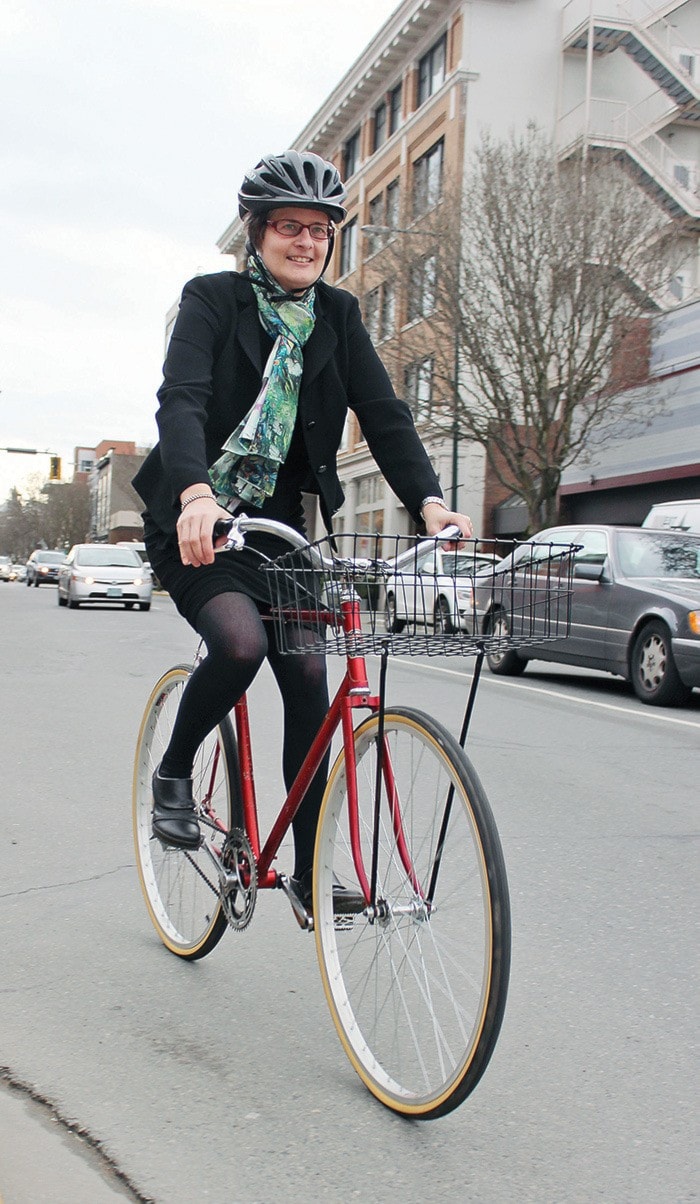In some cities, it may seem unusual to see the mayor riding around on a bike — but for Victoria Mayor Lisa Helps, it is the norm.
Helps, an avid cyclist, travels almost everywhere in the city by bike. She often rides from her home to city hall, city hall to the legislature, and to and from daily meetings, lunches and consultations with the public — all in her everyday clothing from blazers to skirts.
“I ride my bike 99.9 per cent of the time. I hike up my skirt and get on my bike,” Helps said. “You don't need to do anything different when you're getting onto a bike versus getting into a car, other than putting your helmet on or adding lights when it's dark outside. There's nothing special required.”
It's a passion she learned at a young age.
Growing up in London, Ontario, she lived a roughly half-an-hour bike ride from school. While she would often ride with her father, by Grade 7 Helps convinced her parents to let her ride her bike to school by herself.
Years later, she continues to ride everywhere she goes.
When she moved to Victoria in 1997, the first thing she purchased was a bike.
As mayor with back-to-back meetings with ministers, councillors and events, Helps said riding her bike allows her to clear her head.
“It's a way to clear my head, to focus so that when I walk into that minister's office I'm bright-eyed, clear-headed and ready for a conversation. It's like a mental health, well-being exercise,” she said.
“It's that space in between. I do it because when I come to city hall on my bike, my blood is flowing, my mind is sharper, I'm taking deeper breaths, I feel better.”
Helps and Victoria councillors are at the forefront of one of the biggest cycling infrastructures in the city.
Last year, city council allocated $7.75 million to the construction of cycling and pedestrian improvements over the next three years.
They brought in a number of cycling experts who were tasked with enhancing the city's current cycling network. So far, they have identified eight priority corridors for construction over the next three years, with the first corridor being constructed on Pandora Avenue this spring.
The goal is to make Victoria bike lanes accessible for all ages and abilities.
In a recent presentation to council, Andreas Røhl, cycling specialist with Gehl Architects & Studio and former bicycle program manager for the City of Copenhagen, explained the need to normalize cycling, not as a means of transportation, but as a way to improve the city's overall well-being.
“It's not about cycling, it's a means to an end, not a goal itself,” he said.
“Victoria already has a lot of different types of people riding bikes. Apart from having the infrastructure in place, there's a gradual process where you see friends, colleagues, people on the street who you can see as yourself which will encourage you to ride a bike.”
He added a sophisticated cycling network that's safe for all ages means children are able to ride to places, such as after-school programs and sports on their own freeing up more time for parents who normally chauffeur them around.
Helps agreed.
“It's not about cycling, it's about being a regular citizen,” she said.
“The point is if we build proper infrastructure then we give people more transportation options and we create a city where well-being becomes the norm.”
